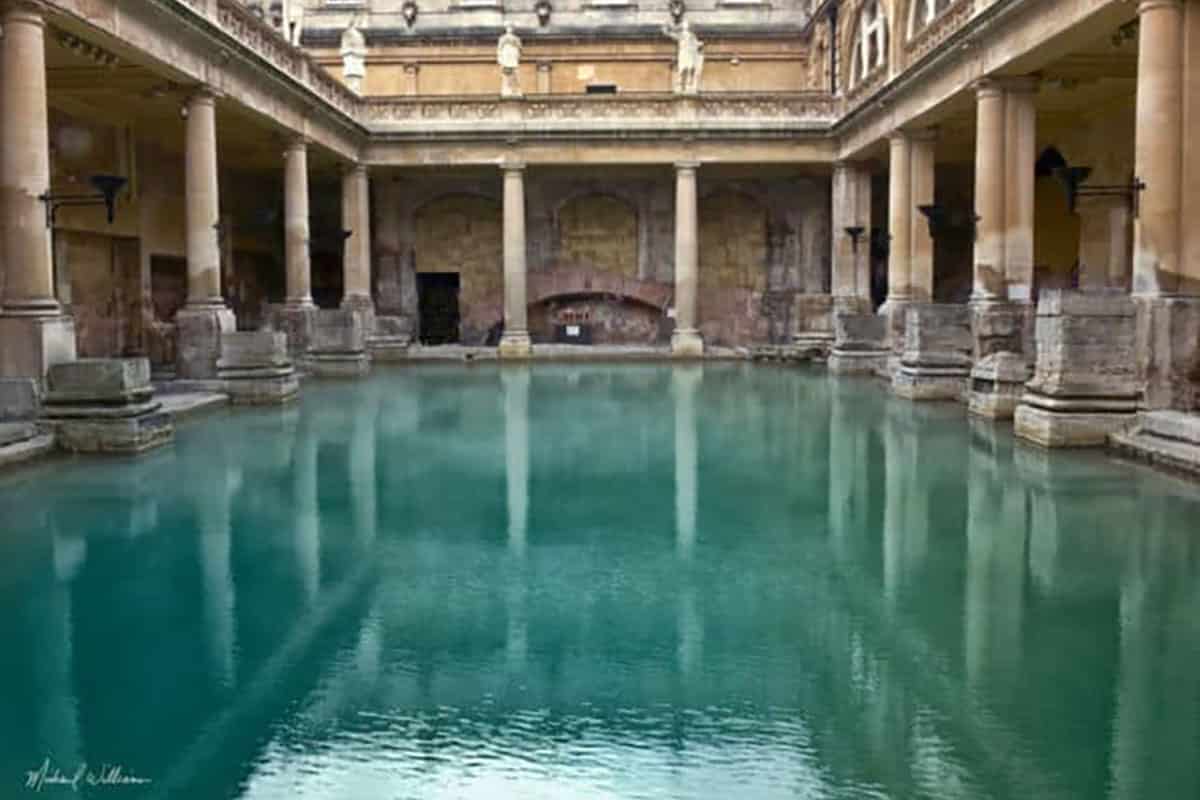
Swimming Pool History. Have you ever wondered when the first swimming pool was used or how they came to be? We think of swimming pools as a modern-day luxury, but they have a long and intriguing history.
Archaeologists discovered one that dates back as early as the 3rd millennium BC. The “Great Bath,” discovered in the Pakistani settlement of Mohenjo-daro, is considered the earliest public tank.
This 12x7m (39x23ft) pool, lined with bricks and sealed with a tar based coating, offered a refreshing swimming experience. Two wide staircases lead down into the tank from the north and south. Small sockets at the edges of the stairs are thought to have held wooden planks or treads. At the foot of the stairs is a small ledge with a brick edging that extends the width of the pool. People coming down the stairs could move along this ledge without actually stepping into the pool itself.
Now a World Heritage Site, Mohenjo-daro is said to have been one of the most advanced cities of its time. It’s sophisticated civil engineering and urban planning included the great public pool, most likely reserved for religious functions and purification.
Bathing played a major part in ancient Roman culture and society. It was one of the most common daily activities practiced across a wide variety of social classes. The elaborate bathhouses built with marble and expensive gilding were very popular with the elite society. But, the majority of people continued to swim in lakes and rivers. Water itself played such an important part of society for thousands of years. During this period bathing pools were placed everywhere and for many reasons. Not only were pools considered aesthetic and enhanced the beauty of the property (much the same as today’s custom pools do in our homes) but pools were used for bathing, health, religious ceremony, socializing and much more.
In AD 305 the Romans built an incredible pool that was over 900,000 square feet. This pool was used for bathing and was also heated by giant fires. These fires were in the basement beneath the floors of the pool. The columns and walls pumped the heat up to the pool above. You can just imagine how beautiful this must have been with marble and statues in the Roman architecture.
Eventually the Romans built the first dedicated “swimming” pools, which were separate from bathing pools and used as part of education. The great Greek philosopher Plato felt that every child needed to learn to swim as part of a proper education along with mathematics, writing, astronomy, etc. And, in fact, it was standard education to teach children to swim in pools dating all the way back to 400 BC.
The first Jacuzzi style custom pool was designed and ordered by Gaius Maecenas, one of Augustus Cesar’s political advisors sometime around 8 BC. This pool was supposedly magnificent with waterfalls, lush gardens, overlooking terraces, libraries, villas and other incredible luxurious decor. These pools were the precursors to modern day swimming pools.
Formed in 1844, The Maidstone Swimming Club is the oldest surviving swimming club in Britain. After the modern Olympic Games which began in 1896, with swimming races, among the original events, the popularity of swimming pools began to spread as newspapers wrote stories and showed photographs of the events. This led to acceleration of municipal pool construction and the introduction of swimming pool chlorination as public officials aggressively publicized pool sanitation measures to alleviate long-standing fears of waterborne illnesses. Swimming pools and swimming clubs were popping up everywhere.
The United States lagged behind, with the first modern in-ground pool not appearing until 1915 in Austin, Texas. The Deep Eddy Pool is now a historic landmark and still operates today. However, after World War II, when returning GIs got their GI loans and moved to the suburbs, a backyard swimming pool became a status symbol for all to see. But since a traditional in-ground pool was very expensive, cheaper above-ground pools became an attractive option. They didn’t require the expensive earthworks required for an in-ground pool, they were much easier to maintain and could be taken apart in the winter.
As post war economy improved, Hollywood thrived, and Americans got a look at how the rich and famous lived — at least in the movies. The swimming pool became a status symbol of luxury living. As Hearst castle became the playground to Hollywood elite, the pool was featured in many earl movies. Hollywood blockbusters soon would feature pools as the toys of these rich and famous, and later in the decade, movies by Esther Williams and Johnny Weissmuller (a.k.a. Tarzan) glamorized the ‘cool’ pool lifestyle (and synchronized swimming).
Today there are millions of residential pools across the country, in cities and suburbs, on modest properties and vast estates. It’s a “luxury” many can afford and others deem essential to a happy, healthy lifestyle.
Reach out and Contact us Today for more information on designing and building your own luxury swimming pool.